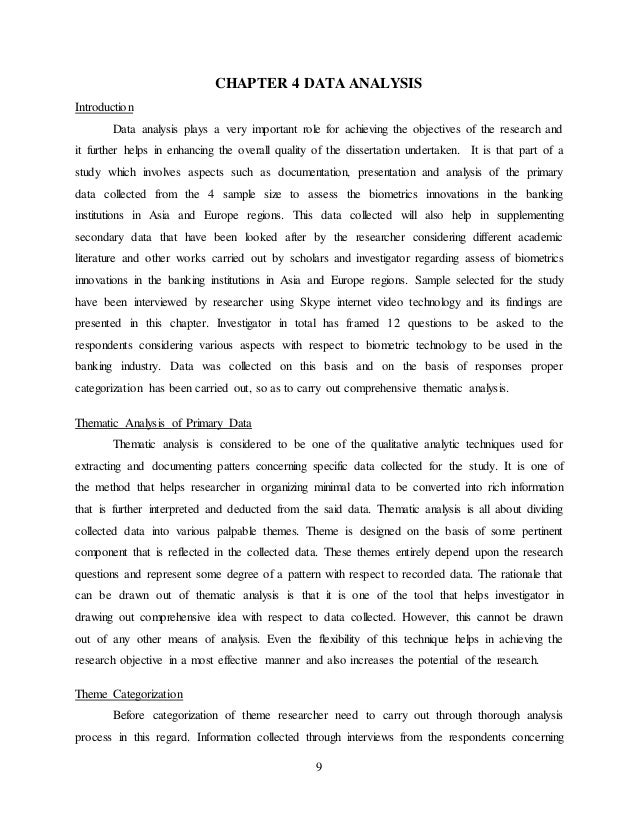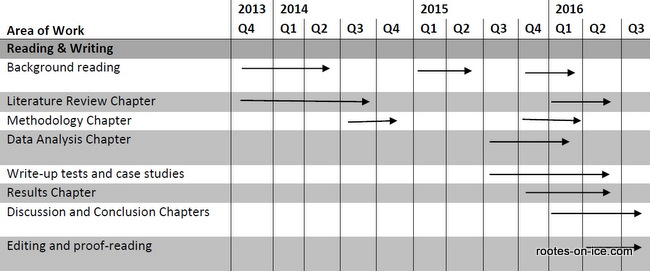
May 06, · To write a literature review for a dissertation, start with an introduction that gives an overview of the topic. In this overview, emphasize the topic's importance, identify recent research, and clarify how that research applies to the body of your dissertation Before one can write a dissertation defending a particular thesis, one must collect evidence that supports it. Thus, the most difficult aspect of writing a dissertation consists of organizing the evidence and associated discussions into a coherent form. Chapter 3: Conceptual Model Nov 05, · This article gives doctoral dissertation students valuable guidance on how to go about writing their Discussion chapter. The article starts by outlining the main goals and writing approaches. Then the article explains 12 specific steps to take to write an effective discussion chapter. Discussion Chapter: Main Goals and Writing Approaches You should always keep in [ ]
How To Write A Dissertation Or Thesis: 8-Steps + Examples - Grad Coach
Last Updated: May 6, This article was co-authored by Christopher Taylor, PhD. Christopher Taylor is an Adjunct Assistant Professor of English at Austin Community College in Texas. He received his PhD in English Literature and Medieval Studies from the University of Texas at Austin in This article has been viewed 17, times. If you're writing a doctoral-level dissertation in the sciences or humanities, you'll most likely be required to include a literature review.
A well-written review brings together the previous work done in your field and places an emphasis upon established points relevant to your topic.
This shows your dissertation committee that you're well-read in your specialty area and can contextualize your work within larger conversations in your field. To write a literature review for a dissertation, start with an introduction that gives an overview of the topic. In this overview, emphasize the topic's importance, identify recent research, how to write dissertation chapter 3, and clarify how that research applies to the body of your dissertation.
In your review, summarize 40 to 50 different sources in a way that provides an analysis of their strengths. As you write, be sure to maintain your own writing voice by trying to think of it as a conversation between yourself and the sources.
For more advice from our academic co-author, including how to research formatting guidelines, read on! Did this summary help you? Yes No. Log in Social login does not work in incognito and private browsers.
Please log in with your username or email to continue. wikiHow Account. No account yet? Create an account. Community Dashboard Write an Article Request a New Article More Ideas Edit this Article. Courses New Skills for Work New Dating Advice New Expert Videos About wikiHow Pro Upgrade Sign In.
Home Random Browse Articles Courses New About wikiHow Easy Ways to Help Approve Questions Fix Spelling Quiz App More Things to Try We use cookies to make wikiHow great. By using our site, you agree to our cookie policy. Cookie Settings. wikiHow is where trusted research and expert knowledge come together. Learn why people trust wikiHow. Download Article Explore this Article parts. Tips and Warnings.
Related Articles. Article Summary. Co-authored by Christopher Taylor, PhD Last How to write dissertation chapter 3 May 6, Part 1 of Understand the formatting and content guidelines. Before you begin writing, check the guidelines specified by your how to write dissertation chapter 3 or university. For example, if you are writing your paper in APA styleread the literature review guidelines online so that you know how to properly format your paper.
If you're not sure which formatting guidelines you should be following, ask your committee chair or major professor. Collect at least 50 relevant literature sources within your field. Once you know your topic and the guidelines for review, you must start collecting relevant literature. In nearly all cases, appropriate academic sources for a lit review include book chapters, published and unpublished dissertations, and academic journal articles.
Peruse your library catalog and relevant scholarly databases until you've found at least 50 sources. Take some time to understand the studies and arguments contained in the published literature. The number of sources you'll need will vary depending on your field and how to write dissertation chapter 3 professor. While not how to write dissertation chapter 3 fields will require 50 sources and some may require moreit's a good ballpark figure to start with.
Make sure that you identify the how to write dissertation chapter 3 and minor fields that your dissertation fits into. Discuss this with your committee and make a list of key terms and concepts to help you as you start collecting sources. Read and analyze all of your sources before you begin writing. Once you have collected all the literature you'll need for the review, start reading the pieces and organize them in a way that helps you while writing.
Develop a helpful system for yourself and stick with it! If you start writing the lit review before you've read all of your sources, you may end up having to delete and revise what you've written. When taking notes, ask questions like: What research methods do the scholars whose work you're reading use? What conflicts have cropped up between different schools of thought?
How have theories in the field changed over time? What names and ideas come up most frequently? Write an annotated bibliography to keep your sources organized. For each source that you how to write dissertation chapter 3, include a citation, a descriptive paragraph of the source, and a brief evaluation of the content.
Having this information for each of your sources will make it easy for you to refresh your memory on what a source was about and quickly find the citation details as needed.
Do not try to write several annotations at once. Part 2 of Include 4—6 subheadings in your lit review to increase readability. These will break the content into smaller, more readable sections. For organizational purposes, label different subheadings with descriptive titles.
Each of your subheadings will begin a section of your lit review that contains methodologically or chronologically similar lit sources. You could have 1 subheading about online-based teaching, another about uses of technology in the classroom, and another about experience-based teaching. Organize sources around the most influential article in each subsection. Within each of the 4—6 subheading categories, select 1 or 2 works that are the most important e.
When synthesizing the other sources within the subsection, relate them back to these crucial 1—2 sources.
Organizing sources will allow you to enumerate the ways in which other sources agree with, disagree with, or otherwise modify the sources of highest importance. Present the sources chronologically within each section. Summarize and discuss the sources according to their date of publication, to show how trends and concepts in your field have evolved and changed with time.
Part 3 of Tie the lit review to the body of how to write dissertation chapter 3 dissertation in the introduction. The introduction of your review needs to do 3 things. The intro should also 2 identify important recent research and any recent controversies in the field. Write each entry in a way that blends summary and analysis. Your dissertation committee will probably be disappointed if your lit review does nothing more than summarize 40—50 different sources.
Synthesize different sources that take a similar approach to a topic. It would be impractical to devote a paragraph in your lit review to each individual source.
So, find ways to group sources together within paragraphs. There are various ways to synthesize sources that include: [3] X Trustworthy Source University of North Carolina Writing Center UNC's on-campus and online instructional service that provides assistance to students, faculty, and others during the writing process Go to source Synthesizing sources by method by comparing different academic works that follow a similar operating method this is especially prevalent in the hard sciences Synthesizing sources by topic, since your lit review should be broad enough to cover at least 4—5 different subfields within your area of study.
Maintain your own writing voice when composing the lit review. Aim to create a conversation between yourself and the sources you have read. Proofread your lit review before moving on with your dissertation, how to write dissertation chapter 3.
Once you have written the review, it is important to check the entire chapter before moving ahead. Reread your review to catch mistakes in sentence mechanics, how to write dissertation chapter 3, grammar, and spelling.
Reviewing your work will also give you a chance to expand on any sections that seem short or underdeveloped. Include your email address to get a message when this question is answered.
Give yourself at least months to write the literature review. Helpful 0 Not Helpful 0. If you're seriously struggling to write your literature review, you can consult a professional editorial company to help you write your review, how to write dissertation chapter 3.
Related wikiHows How to. How to. About This Article. Co-authored by:. Christopher Taylor, PhD. Co-authors: 8. Updated: May 6,
Writing the Methodology chapter in a dissertation
, time: 19:59How To Write A Dissertation Or Thesis Introduction Chapter - Grad Coach

May 06, · To write a literature review for a dissertation, start with an introduction that gives an overview of the topic. In this overview, emphasize the topic's importance, identify recent research, and clarify how that research applies to the body of your dissertation Dec 13, · The dissertation advisor usually has an opinion about the level of detail needed in this chapter. Table titles and figure captions should be understandable without reading the chapter text. Note all relevant results, even those that were contrary to the alternative hypotheses, or those that tend to distract from clear determinations Sep 16, · In the simplest words, a dissertation literature review has to acknowledge all the sources you have used to gather information for your research in a very comprehensive yet concise way. It is the lengthiest chapter of a dissertation that proves and explains the authenticity of your research

No comments:
Post a Comment